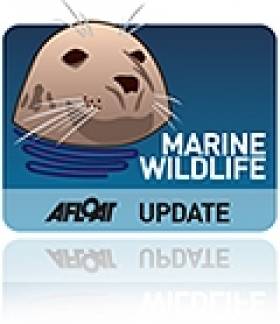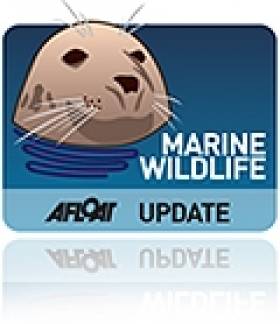Displaying items by tag: seal pups
Concerns Over Seal Deaths in Donegal
Seven dead seals washed up in Donegal are believed to have died of natural causes - but concerns over a pattern of seal deaths nationwide remain.
As the Donegal Democrat reports, the seven grey seals - which are a protected species - were found beached along with a dead dolphin in the Rosberg area.
A ranger with the National Parks and Wildlife Service confirmed that none of the marine animals had been shot.
But Pauline Beades of the Irish Seal Sanctuary said the find was just one in a series of reports of "strange" seal deaths around the country.
“You don’t find three, four, five animals dead on a beach," she said. "I would be very concerned that this is not a normal occurrence.”
It is not yet known if a post-mortem will be carried out in the dead seals, but members of the public are encouraged to report any similar finds as the thocine distemper virus has been responsible for seal deaths in the past.
Beades said that grey seals are now having their young, and asked the public to keep an eye out for seal pups and report anything that looks suspicious in the area.
The Donegal Democrat has more on the story HERE.
Irish Seal Sanctuary Receives Surprise Donation
A young supporter of the Irish Seal Sanctuary (ISS) has donated €450 to help the seals she visits regularly.
Staff at the sanctuary in Courtown, Co Wexford were amazed when 13-year-old Sarah Butler donated her personal savings towards the care of stranded or orphaned seal pups.
Sarah and her mother Karen from Wexford town have been frequent visitors to the sanctuary and even adoped its first grey seal of the season, named Debbie.
In recognition of Sarah's incredible generosity, the ISS has awarded her with 'freedom of the sanctuary' and welcomed her to visit any time she wants.
Strangford Seal Deaths (Warning Picture May Upset Some Viewers)
The Northern Ireland Environment Agency (NIEA) has expressed concerns over a high number of unnatural seal deaths reported in recent years along the County Down coast.
Declan Looney, Senior Wildlife Inspector with the NIEA said: "Both harbour and grey seals are species protected under European and Northern Ireland legislation. Between late June and the end of November 2009, 16 seal carcasses were recovered from the shores of County Down, largely from Strangford Lough, Minerstown and Dundrum Bay.
"These were submitted for post mortem examination by veterinary pathologists. Twelve of them (predominantly grey seal pups and juveniles) showed signs of having suffered an unnatural death."
The post mortems undertaken in 2008 and 2009 found evidence of drowning, fractured jaws, and extensive knife cuts (generally around the neck) made following the animals' deaths. Several had the head cut off. Severe trauma consistent with gunshot wounds or blows from sharp objects was also recorded.
Though circumstantial evidence indicates interaction with some form of net in at least two cases, there is no proof that these seal deaths have resulted from legitimate, licensed fishing activity. Neither is there evidence linking these deaths to the marine current turbine being trialled in the Strangford Narrows, as this would not inflict the sharp cuts seen.
The Agency accepts that some deaths by drowning may be the result of inadvertent by-catch in legitimate fishing nets. The reporting of such instances will help evaluate the scale of this problem and assess ways of minimising this risk.
Declan Looney added: "The Agency is investigating the causes of this mortality and is liaising with other relevant organisations to address the issue. Members of the public can assist by reporting all dead seal strandings to NIEA on 028 4461 5520.
"Anyone who witnesses suspicious activity involving seals should report this immediately to their local PSNI station, telephone 08456 008 000 or call Crimestoppers anonymously on 0800 555 111.
"Any information on suspected illegal netting for sea trout and salmon should be reported on 0800 80 70 60."
Where live seal pups appear to have been abandoned, they should not be approached as their mothers are probably nearby. However where there is real concern over the welfare of such pups and they appear to be injured, sick or distressed, the circumstances should be reported to the Northern Ireland Aquarium (Exploris) on 028 4272 8062 or 028 4272 8002.

This photo was taken at Kircubbin on Strangford Lough, the stick in the picture is a metre rule which gives some perspective
Further Information:
1. Both the harbour (common) seal and grey seal are protected in Northern Ireland by inclusion on Schedule 5 of the Wildlife (NI) Order 1985 as 'animals which are protected at all times'. Both species are also listed on Schedule 6 as 'animals which may not be killed or taken by certain methods' and on Schedule 7 as 'animals which may not be sold alive or dead at any time'.
Anyone with evidence of killings of Schedule 5 species should report this to the PSNI. The PSNI has a Wildlife Liaison Officer who will work closely with the local police station in following up these sorts of cases with a view to prosecution.
2. Both the harbour seal and grey seal are also listed under Annex II of the EC Habitats Directive (1992) as species whose conservation requires the designation of Special Areas of Conservation (SAC). In Northern Ireland there are two SACs where common seals are qualifying features - Strangford Lough SAC and Murlough SAC. However, as species of Community interest (SCI) they are protected wherever they occur, within designated sites or outside.
3. Both species are listed on Annex V of the EC Habitats Directive (1992) as species of community interest whose taking in the wild and exploitation may be subject to management measures.
4. Seals are also protected, through the Environment (Northern Ireland) Order 2002, where listed as a feature within ASSIs. This is the principal site protection measure in Northern Ireland and has aspects of relevance for a diverse range of marine users, including the powers to prohibit or restrict entry into or movement within ASSIs of people, vehicles and boats. This order makes it an offence to intentionally or recklessly damage or destroy any feature of interest.
5. Harbour and grey seals are also listed on Schedule 3 of the Conservation (Natural Habitats, etc.) Regulations (NI) 1995, providing protection from indiscriminate methods of taking and killing. They are also included in Part IV which requires that appropriate assessments are undertaken for SACs which list seals as qualifying features.
6. The Northern Ireland legislation protecting seals is stronger than that for Great Britain. Here the only situation in which seal killing is legally permitted is where a seal is causing 'serious damage' to a fishery. Such killing must immediately be reported to NIEA with an explanation of the circumstances, which NIEA would expect to give evidence that all attempts to exclude or scare it away had failed.
7. Exceptionally NIEA has issued licenses to the operators of 'fixed engine' salmon nets and fish farm cages to kill seals in response to immediate serious threat to these fisheries, again to be used as a last resort and to be reported to NIEA.
8. Since the 2002 outbreak of the Phocine Distemper Virus (PDV), NIEA has maintained a record of all seal mortalities. As a result of the enhanced environmental monitoring associated with the trial Marine Current Turbine in the Strangford Narrows, all seal carcasses found between Cloghy and Minerstown, including all of Strangford Lough, are now recovered for post mortem examination, except where already in an advanced state of decay.
9. 2008 Seal Mortalities
The 2008 post mortem reports revealed:
• Of the 18 seal carcasses which were submitted for post mortem examination, 9 seals showed evidence indicative of an unnatural death
• 4 seals had the head removed by a sharp blade (not through decomposition as happens naturally)
• 1 seal had net caught around its neck.
• All the unnatural mortalities were recorded between 12th September and 10th November.
2009 Seal Mortalities
The 2009 post mortem reports revealed:
• Of the 16 seal carcasses submitted for post mortem examination, 10 were grey seals (7 pups, 3 adults), 2 were common seals (1 pup, 1 adult) and 4 seals were of indeterminable/unrecorded species (due to advanced autolysis).
• 12 carcases had evidence indicative of knife cuts, drowning, shot wounds or broken jaw. Several seal carcases displayed evidence of a combination of injuries as follows:
• Knife cuts (n=9)
• Drowning (n=5)
• Shot wounds (n=2)
• Jaw fractures (n=1)
• All unnatural mortalities were recorded between 25th June and 30th November.
10 More information on the seals of County Down can be found on the Strangford Lough and Lecale Partnership website www.strangfordlough.org































































